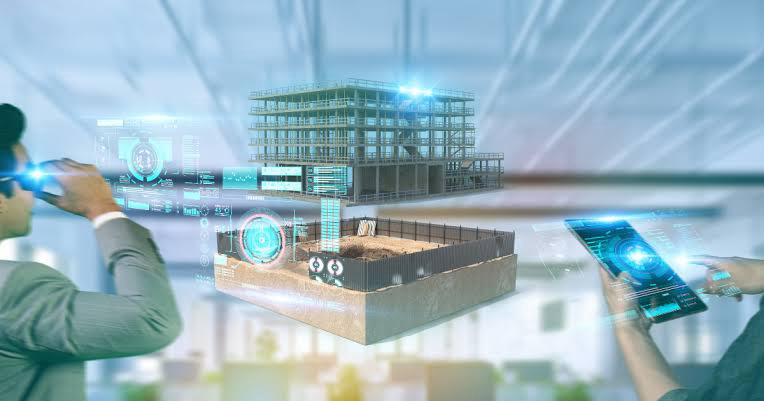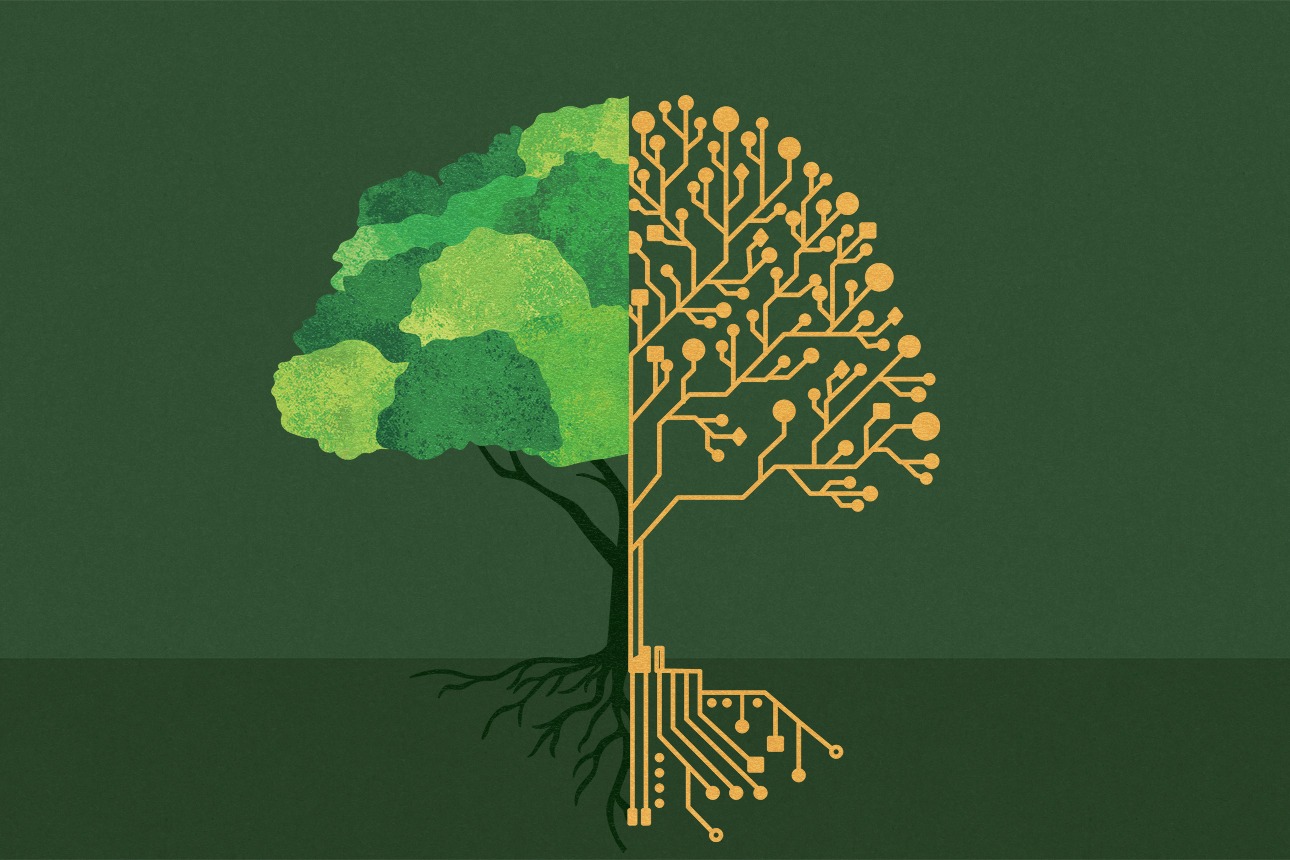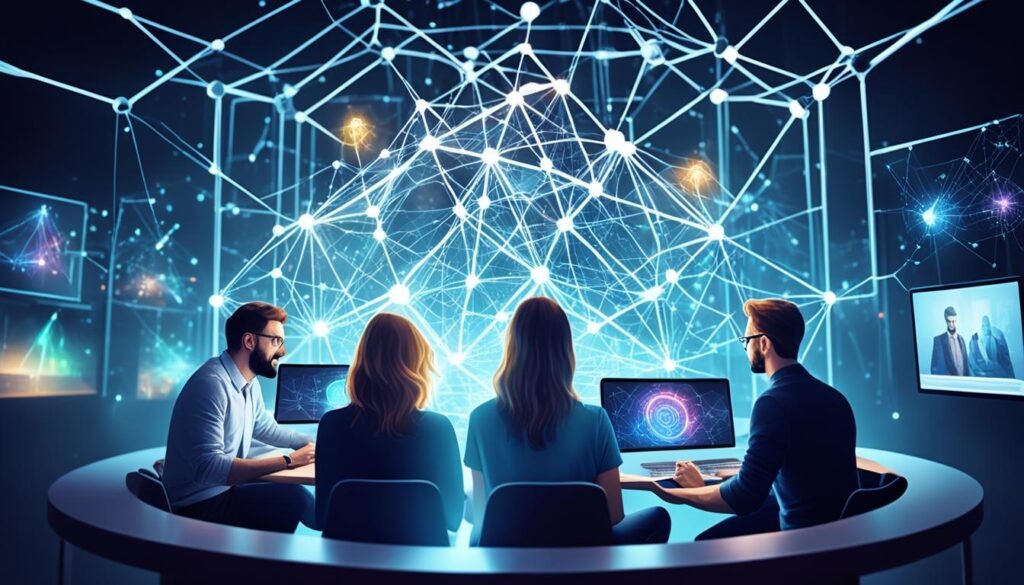
The Rise of Digital Twins: Your Virtual Self in the Cloud.
Digital twins are transforming the way we interact with technology, evolving from industrial simulations to personalized virtual replicas of humans. By integrating data from wearables, AI, and cloud systems, these digital counterparts mirror our physical, emotional, and behavioral patterns, enabling personalized healthcare, fitness, mental wellness, education, and even social interactions, while raising critical ethical, privacy, and identity considerations in the modern digital era.
✨ Raghav Jain

The Digital Twin Revolution: From Machines to Humans
In the early days of digital transformation, the concept of a “digital twin” referred to a virtual replica of a physical asset — like a jet engine, a wind turbine, or a factory line. Engineers used these replicas to simulate performance, detect problems before they occurred, and optimize efficiency. Today, that same principle is being applied to something far more complex — human beings.
A digital twin of a person is a highly detailed digital model that represents not just your body, but also your mind, habits, behaviors, and even emotions. It is fed by data from sensors, wearables, social media, and digital records, continuously learning and evolving to reflect your changing physical and psychological state. Imagine a cloud-based version of you that can make decisions, predict your future health risks, or even interact with others on your behalf. This futuristic concept is no longer science fiction; it’s fast becoming a technological reality.
How Digital Twins Work: Data, AI, and the Cloud
A human digital twin is powered by three key components — data, AI algorithms, and cloud computing.
- Data Collection:
- The foundation of a digital twin lies in the data collected from multiple sources. Wearable devices like smartwatches, health trackers, and smartphones record physiological information such as heart rate, sleep patterns, activity levels, and stress markers. Meanwhile, social media behavior, purchasing patterns, and digital footprints provide insights into personality and lifestyle.
- Artificial Intelligence (AI):
- AI algorithms process this vast data to understand patterns, simulate behaviors, and make predictions. For instance, your digital twin might learn your typical stress triggers, suggest better coping mechanisms, or even predict the onset of illness before symptoms appear.
- Cloud Infrastructure:
- All this data and analysis are stored and processed in the cloud, allowing seamless access, scalability, and real-time updates. This ensures that your digital twin evolves as you do — learning from every heartbeat, keystroke, and online interaction.
Together, these elements create an ecosystem where your virtual self becomes a living, learning digital entity — capable of representing you in both physical and virtual worlds.
Applications of Digital Twins: Where Virtual Meets Reality
The rise of human digital twins is reshaping multiple sectors. Here’s how:
1. Healthcare and Personalized Medicine
In medicine, digital twins are revolutionizing diagnosis, treatment, and prevention. Doctors can simulate a patient’s unique physiology to predict how they will respond to specific drugs or surgeries. For example, a digital twin of a heart can help cardiologists test various treatment scenarios before operating on the actual patient.
Startups like Siemens Healthineers and Philips are developing digital twin models to create personalized treatment plans. Moreover, with the help of AI and genomics, digital twins can forecast diseases like diabetes or cancer years before onset, enabling early interventions and lifestyle modifications.
2. Fitness and Wellbeing
Fitness applications are moving beyond simple tracking toward predictive coaching. A digital twin, informed by your metabolic data and past performance, can tailor workouts, nutrition, and rest patterns to your exact physiology. It can simulate the effects of different routines, allowing users to see potential outcomes before committing to them.
Imagine your fitness app advising, “If you maintain this sleep pattern and diet for two weeks, your endurance will increase by 8%.” This personalized feedback loop creates a smarter, more adaptive health ecosystem.
3. Mental Health and Emotional Modeling
AI-driven twins can also mirror emotional states. By analyzing voice tone, word choices, and digital communication patterns, they can detect mood swings or early signs of depression and anxiety. Some companies are developing emotional AI twins that can serve as virtual therapists — listening, empathizing, and providing cognitive behavioral support 24/7.
Over time, this creates a deeply personalized emotional assistant — one that knows your stress triggers, helps manage anxiety, and suggests relaxation techniques tailored to your mood.
4. Education and Career Development
Digital twins are entering the learning and corporate sectors too. Imagine a digital twin that tracks your professional performance, learning habits, and strengths, then recommends upskilling courses or simulates career trajectories. In education, digital twins can help students understand how different study habits or schedules affect learning outcomes, enabling highly individualized education plans.
For companies, employee digital twins can model productivity and training effectiveness, optimizing workplace strategies.
5. Virtual Companions and the Metaverse
As the metaverse expands, digital twins could become avatars of unprecedented accuracy — versions of ourselves capable of living, working, and interacting in virtual environments. These twins could attend virtual meetings, represent us in gaming worlds, or even act as proxies for online social interaction.
Companies like Microsoft, Nvidia, and Epic Games are already developing platforms that combine digital twins with augmented and virtual reality to create seamless human-machine collaboration.
6. Smart Cities and Social Behavior
At a societal level, aggregated digital twins could simulate urban dynamics — predicting traffic patterns, energy demands, and even disease spread. Individual human twins, anonymized and integrated into large-scale systems, could help governments design smarter, more responsive cities.
Ethical and Privacy Challenges
While digital twins offer immense promise, they also raise serious ethical, security, and philosophical questions.
1. Privacy and Data Ownership
Who owns your digital twin? Is it you, the AI company, or the cloud provider? With the massive amount of personal data involved, privacy breaches could have devastating consequences. A hacker accessing your digital twin could gain insights into your behavior, location, and even emotions.
2. Identity and Consent
As digital twins grow more autonomous, how do we define identity? If your twin makes decisions on your behalf — say, negotiating a deal or sending a message — who’s accountable for the outcome? Legal frameworks have yet to catch up with this emerging technology.
3. Psychological Impacts
There’s also the potential psychological strain of coexisting with a smarter, more efficient digital version of oneself. People might begin to rely too heavily on their digital counterparts, weakening real-world decision-making and interpersonal relationships.
4. Inequality and Accessibility
Like many advanced technologies, digital twins could deepen social divides. Only those who can afford high-end devices and AI platforms might benefit, leaving behind populations in developing regions or low-income groups.
The Future of Digital Twins: Toward Human-AI Synergy
The ultimate vision of digital twins is symbiosis between humans and AI. In the near future, these twins could act as lifelong partners — tracking our growth, learning our values, and helping us make decisions that enhance health, happiness, and productivity.
Future digital twins may include:
- Cognitive Models: Simulating not just personality, but reasoning and creativity.
- Digital Immortality: Storing consciousness patterns that could theoretically “live on” after death.
- Adaptive Ethics Engines: Embedding personal moral values into digital twins for more human-aligned decision-making.
The convergence of biotechnology, neuroscience, and AI will likely make this vision possible within decades. Your digital twin might one day hold your memories, preferences, and worldview — essentially becoming your second self.
The concept of digital twins has evolved from industrial machinery to human representation, merging biology, data science, and artificial intelligence into one dynamic ecosystem. By creating virtual replicas of people, this technology holds the potential to revolutionize healthcare, education, personal development, and even social interaction. However, with great innovation comes equally great responsibility. The ethical and psychological dimensions of digital twins demand thoughtful governance to ensure that this technology enhances humanity rather than undermines it.
In the rapidly evolving digital era, the concept of a “digital twin” has transformed from a tool for industrial optimization to a mirror of human existence itself. Initially, digital twins were engineered to replicate physical assets like engines, turbines, and manufacturing systems, providing real-time data and simulations that improved performance and reduced failures. Today, this same principle is being applied to human beings, creating digital counterparts that exist in the cloud — intelligent, data-driven reflections of our physical, emotional, and behavioral selves. A human digital twin is essentially a virtual version of you, continuously updated with data from various sources: wearable devices, smartphones, medical sensors, online interactions, and even biometric and emotional cues. Artificial intelligence analyzes this immense data stream to map out your habits, monitor your health, predict your behavior, and provide personalized insights that could revolutionize how we live. In healthcare, digital twins promise an era of precision medicine where treatments can be tested virtually before being applied to real patients. Imagine a scenario where your doctor, instead of prescribing a generalized treatment, consults your personal digital twin — an exact model of your body’s functions — to simulate drug interactions and select the safest, most effective option. In fitness and wellness, digital twins can track your metabolism, sleep, and exercise patterns to recommend the best workout routines or diets tailored to your unique physiology. These systems can even predict performance outcomes, like showing you the effects of a new fitness plan before you begin. Beyond physical health, the next wave of digital twins will model emotional and cognitive states, offering real-time mental health insights. By analyzing speech tone, text patterns, and social behavior, they could identify early signs of anxiety, depression, or burnout — providing timely intervention strategies. The same emotional modeling is finding use in AI companions designed to understand empathy and human communication, blurring the line between psychological support systems and digital relationships. In education and professional development, digital twins can simulate learning patterns, identify gaps in knowledge, and suggest personalized growth paths. Imagine a student’s digital twin assessing how different study techniques affect retention, or a professional’s twin predicting career growth based on skill acquisition and behavior. The corporate world is already experimenting with employee digital twins to optimize productivity, simulate training outcomes, and even improve workplace design through behavioral modeling. Meanwhile, in the expanding metaverse, digital twins are evolving into hyper-realistic avatars capable of representing us in virtual worlds, attending meetings, interacting with others, and even making decisions in our absence. Companies like Microsoft and Nvidia are investing heavily in AI and cloud infrastructure to make these simulations more lifelike and interactive. However, as digital twins move closer to replicating the human mind and personality, they introduce a host of ethical and philosophical questions. Who owns your digital twin — you or the corporation that hosts it? How do we secure the sensitive data that defines your virtual self? A breach in this system could expose your medical history, emotional patterns, and personal preferences, creating unprecedented privacy risks. There is also the issue of autonomy and accountability — if your digital twin makes a decision on your behalf, who bears responsibility for its consequences? Moreover, the psychological implications of interacting with a digital version of yourself could be profound. Some may find empowerment in using a digital twin to improve themselves, while others may struggle with identity, feeling inferior to a version of themselves that is “smarter” or more efficient. The potential for misuse also looms large — digital replicas could be exploited for surveillance, manipulation, or commercial gain, further blurring the boundary between personalization and intrusion. Yet despite these concerns, the benefits of digital twins are too transformative to ignore. In the context of smart cities, aggregated digital twins — anonymized versions of millions of individuals — can help predict traffic flows, energy consumption, or even the spread of diseases, making urban environments more adaptive and sustainable. In the long term, advancements in biotechnology, neuroscience, and artificial intelligence could lead to digital twins capable of simulating consciousness, enabling humans to preserve cognitive patterns indefinitely — a concept often described as “digital immortality.” While that idea raises deep ethical and spiritual questions about the nature of life and death, it also represents humanity’s quest to merge with technology in pursuit of self-understanding and longevity. The future of digital twins will likely lie in symbiosis — not replacing humans, but extending our capabilities. By integrating our biological intelligence with artificial cognition, these virtual selves could help us make better decisions, optimize health, enhance creativity, and expand what it means to be human. However, for this future to unfold responsibly, global frameworks must address privacy, consent, equality, and data ownership, ensuring that digital twins serve humanity rather than exploit it. The rise of digital twins symbolizes a defining moment in our digital evolution — one where the boundary between physical and virtual identity fades, giving birth to a new era of personalized, predictive, and participatory existence. Whether we embrace this future with caution or enthusiasm, one thing is certain: our virtual selves in the cloud are not merely reflections — they are the next step in human evolution, a mirror that learns, grows, and, perhaps one day, feels.
In the modern era of technology and data-driven innovation, the concept of digital twins has evolved from a tool initially designed to replicate and monitor industrial machines and complex infrastructure into a sophisticated digital representation of human beings, where our physical, emotional, and cognitive dimensions can be modeled, analyzed, and optimized in virtual environments, creating an unprecedented intersection between human life and artificial intelligence; traditionally, digital twins were used in sectors such as aerospace, manufacturing, and urban planning to simulate the performance, lifespan, and maintenance needs of engines, turbines, and large-scale machinery, allowing engineers to detect faults, predict failures, and improve efficiency without physically testing each asset, but today, this powerful principle is being extended to humans, leading to the development of individualized virtual counterparts that exist in the cloud and are continuously updated with vast amounts of data from wearable devices, smartphones, biometric sensors, health records, social media activity, and even environmental interactions, which collectively provide a comprehensive picture of one’s physiological, behavioral, and emotional state, while artificial intelligence algorithms analyze this enormous stream of information to uncover patterns, make predictions, and generate actionable insights tailored to the individual, enabling applications that range from personalized medicine to fitness optimization, mental health support, professional development, and beyond, and in healthcare specifically, digital twins are redefining the possibilities of precision medicine by allowing clinicians to simulate the effects of drugs, surgical interventions, and lifestyle changes on an exact virtual model of a patient’s body before applying any treatment in reality, thus reducing risks, improving outcomes, and facilitating preventive care; for instance, a cardiologist can examine a patient’s heart digital twin to test multiple treatment options, predict recovery timelines, and identify potential complications, while oncologists might use tumor models within a digital twin framework to determine the most effective combination of therapies based on genetic, biochemical, and metabolic data unique to the patient, and beyond physical health, digital twins are increasingly capable of modeling psychological and cognitive processes, analyzing factors such as speech patterns, online communication, social engagement, and even facial microexpressions to assess mental well-being, detect early signs of anxiety, depression, or stress, and provide adaptive interventions that offer personalized guidance or virtual therapy sessions, effectively functioning as an intelligent emotional assistant that can recognize mood shifts, suggest coping strategies, and help manage cognitive load, which is particularly valuable in a world where mental health challenges are becoming increasingly prevalent; in the realms of fitness and lifestyle, digital twins act as sophisticated coaching systems that monitor activity levels, sleep quality, nutritional intake, and metabolic responses to create optimized exercise and diet plans tailored to the individual, simulating various scenarios to predict outcomes and motivate users by demonstrating measurable improvements before even executing a regimen, while in education and professional development, digital twins provide a personalized learning and career growth framework by analyzing study habits, cognitive strengths, and skill acquisition patterns, offering recommendations for courses, training programs, and performance improvements, and in corporate settings, they allow organizations to model employee productivity, training effectiveness, and workflow optimization, creating a dynamic system for continuous performance enhancement; with the rise of virtual worlds and the metaverse, digital twins are also being utilized as avatars that can represent individuals in online interactions, attend meetings, and even perform tasks autonomously, enabling an extension of the self into digital spaces while maintaining continuity with real-world behavior and decision-making patterns, which could fundamentally alter how we socialize, work, and engage with digital environments, but the technology’s potential is accompanied by significant ethical, legal, and societal considerations, including questions about data ownership, privacy, consent, and accountability, since a digital twin is created from sensitive personal information encompassing physical, psychological, and behavioral characteristics, and a breach or misuse of this data could expose intimate aspects of identity, manipulate choices, or even lead to discrimination, while the autonomy of digital twins raises philosophical questions about decision-making and responsibility, particularly when actions taken by a virtual self have real-world consequences, and there is also a psychological dimension to consider, as interacting with a digital version of oneself that is more efficient, informed, or capable than the physical self could impact self-esteem, identity perception, and interpersonal relationships, potentially fostering dependency on the virtual model; additionally, the adoption of digital twins may exacerbate social inequality, as access to advanced AI, wearable technology, and cloud infrastructure is not universally available, and without equitable frameworks, the benefits of this innovation could be limited to those with financial means, leaving marginalized populations behind, while large-scale implementations, such as integrating human digital twins into smart cities, offer transformative possibilities for urban planning, traffic management, public health monitoring, and disaster response by using anonymized aggregate data to simulate collective human behavior, forecast resource needs, and optimize services, highlighting the dual nature of digital twins as tools for individual enhancement and societal management; looking to the future, continued advancements in biotechnology, AI, and neuroscience suggest that digital twins may eventually incorporate increasingly complex cognitive and emotional models, allowing for near-realistic simulations of human thought processes, decision-making patterns, creativity, and even memory, with speculative possibilities including forms of digital immortality in which an individual’s experiences, knowledge, and personality could persist indefinitely in virtual space, raising profound ethical, existential, and legal questions about identity, consciousness, and the boundaries between human and machine; ultimately, the rise of human digital twins represents both an extraordinary opportunity and a significant responsibility, offering a chance to improve health, productivity, learning, and social interaction while challenging society to address privacy, consent, equity, and psychological well-being, emphasizing that the value of digital twins will not simply be measured by technological sophistication, but by the ethical frameworks, regulatory standards, and societal norms developed alongside them, ensuring that these virtual selves enhance human life rather than exploit or diminish it, and as the boundary between physical and digital identity continues to blur, digital twins symbolize a profound evolution in human experience — one in which individuals have the potential to engage with a living, learning, adaptive version of themselves that mirrors their body, mind, and behavior, serving as a tool for self-knowledge, growth, and empowerment, while simultaneously demanding reflection on what it means to exist in a world where our virtual counterparts can act, learn, and evolve alongside us, creating a future in which humans and their digital twins coexist in a dynamic interplay that could redefine life, work, relationships, and even mortality in ways previously confined to the realm of science fiction, ultimately illustrating that the rise of digital twins is not merely a technological trend, but a fundamental shift in the understanding of identity, human potential, and the interplay between reality and virtuality, offering a vision of personalized, predictive, and participatory existence that challenges the imagination, reshapes industries, and invites society to rethink the nature of what it means to be human in the cloud-driven, AI-enhanced future.
Conclusion
The rise of digital twins marks a profound turning point in the digital age — where the boundaries between physical and virtual selves blur. Our future might soon involve a world in which everyone has a digital counterpart — a mirror image that learns, grows, and possibly outlives us. Harnessed ethically, digital twins could help us live longer, think smarter, and evolve beyond our biological limits. But without careful oversight, they could also redefine what it means to be “human” in unsettling ways. The challenge lies not just in creating them — but in understanding how to coexist with them.
Q&A Section
Q1: What exactly is a digital twin?
Ans: A digital twin is a virtual model of a physical entity — initially used for machines or systems, but now extending to humans. It continuously collects data from real-world inputs to simulate, predict, and optimize performance or behavior.
Q2: How do digital twins apply to human beings?
Ans: Human digital twins replicate a person’s physical, behavioral, and psychological attributes using data from wearables, health records, and online activities. They can simulate health outcomes, predict mood changes, and provide personalized recommendations.
Q3: What are the key benefits of digital twins in healthcare?
Ans: In healthcare, digital twins can model patient conditions, forecast disease progression, and personalize treatments. They enable early diagnosis, simulate drug reactions, and improve overall preventive care.
Q4: Are there privacy risks associated with digital twins?
Ans: Yes, privacy is a major concern. Digital twins rely on vast personal data, which, if hacked or misused, could expose sensitive health, behavioral, or emotional information. Strong data governance is essential to protect users.
Q5: Can digital twins make decisions for humans?
Ans: Advanced digital twins may assist in decision-making by analyzing data and predicting outcomes. However, ethical concerns arise if they act autonomously, raising questions of accountability and consent.
Similar Articles
Find more relatable content in similar Articles

The Hidden Energy Cost of Stre..
As digital streaming and onlin.. Read More

The Decentralized Web (Web 3.0..
"Explore the transformative wo.. Read More

Wearable Tech 3.0: From Smartw..
“Exploring Wearable Tech 3.0: .. Read More

The Rise of Digital Twins: You..
Digital twins are transforming.. Read More
Explore Other Categories
Explore many different categories of articles ranging from Gadgets to Security
Smart Devices, Gear & Innovations
Discover in-depth reviews, hands-on experiences, and expert insights on the newest gadgets—from smartphones to smartwatches, headphones, wearables, and everything in between. Stay ahead with the latest in tech gear
Apps That Power Your World
Explore essential mobile and desktop applications across all platforms. From productivity boosters to creative tools, we cover updates, recommendations, and how-tos to make your digital life easier and more efficient.
Tomorrow's Technology, Today's Insights
Dive into the world of emerging technologies, AI breakthroughs, space tech, robotics, and innovations shaping the future. Stay informed on what's next in the evolution of science and technology.
Protecting You in a Digital Age
Learn how to secure your data, protect your privacy, and understand the latest in online threats. We break down complex cybersecurity topics into practical advice for everyday users and professionals alike.
© 2025 Copyrights by rTechnology. All Rights Reserved.